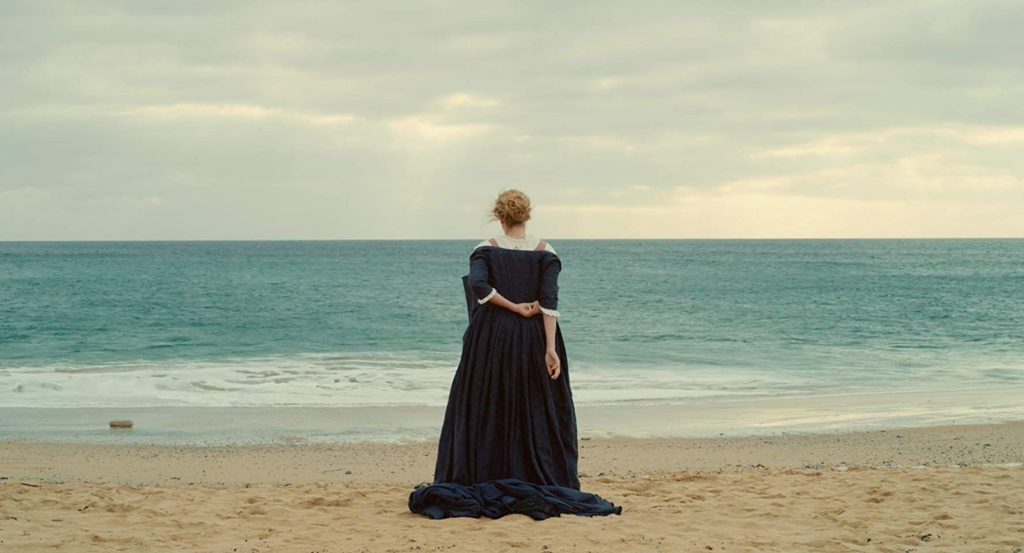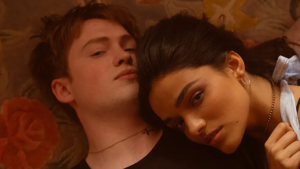Portrait of a Lady on Fire: A Painful and Beautiful Experience

Image courtesy of bustle.com
By Noelia Veras
Céline Sciamma’s latest film, Portrait of a Lady on Fire, has riveted critics and viewers alike with its fascinating storyline and beautiful cinematography. The French film debuted last May at the Cannes Film Festival but first hit theaters in the United States in December.
Portrait of a Lady on Fire is a ravishing masterpiece with skilled and tact performances from Adèle Haenel as Héloïse and Noémie Merlant as Marianne. Every single shot seen in the movie looks like a painting. The cinematography and mise-en-scene add a sort of gravity to the movie, grounding it in beauty. The movie at times was so gorgeous that it was almost painful; the visuals were simply too good to be true.
Portrait of a Lady on Fire follows a painter named Marianne and her past love affair with aristocrat Héloïse. The film begins with Marianne teaching a painting class to many young ladies. When one of them accidentally brings out a painting of a woman on fire the narrative begins to unfold through a flashback.
The film is a slow burn, taking its time to develop characters and relationships. Conversations between Héloïse and Marianne are wordless at first; only through the gaze of the two characters is anything ever communicated in the first act. Mainly, this is because Marianne was secretly hired to paint the portrait of Héloïse in order to send an image of her to the man she is meant to marry. Héloïse refuses to pose for painters as a form of rebellion. Héloïse is under the impression that Marriane was hired to keep her company so she does not harm herself before the arranged marriage, like her sister did.
The film captures moments full of tensions and emotion with, at first, hardly any dialogue. Crashing waves and billowing winds communicate the tensions and fears between the Marianne and Héloïse, and long unbroken bouts of emotion filled stares convey their connection. The film at first makes it seem as though Marianne’s gaze is merely that of a painter, but as the two women spend more and more time together it is clear that Marriane’s gaze is one of a painter and also one of a lover.
The film really only follows four characters: Marianne, Héloïse, Sophie, and the countess. Luàna Bajrami delivers a ravishing performance as Sophie, the maid who often drives the plot forward. Sophie is a multi-dimensional character with true depth who is beautifully developed by Sciamma. The countess, played by Valeria Golino, is also a very complicated character with deep ties to her Italian heritage and brings another language and distinct culture to the film that is refreshing.
At the Cannes Film Festival Portrait of a Lady on Fire received the award for the Best Screenplay. The reason the screenplay of the film is so impressive is because it packs so much in limited and succinct dialogue and carries heavily packed motifs and metaphors seamlessly. For example, one night, Héloïse reads Sophie and Marianne the story of Orpheus and Eurydice. The three discuss the true reason behind why Orpheus turned around to look at his wife, even though he knew that if he did so he would die. The film is arguably a microcosm of the tale, and at one point is referenced when Marianne and Héloïse say goodbye. As Héloïse calls after Marianne to turn around, Marianne does so right when she walks out of the house that they had shared briefly, mirroring the tales end.
Portrait of a Lady on Fire is a film not only about love but about art. The narrative reveals that art is not truly radiant until the painter knows their subject well. This is emphasized by the several paintings of Héloïse that are destroyed by the respective painters. Before Marianne, painters could not capture Héloïse because they didn’t know her well enough. Marianne is even confronted by this at first when she is only given a few days to paint this woman that she hardly even knew. With the passage of time and the moments shared between the two, Marianne is able to capture the essence of Héloïse by applying infinitesimal and overlooked details in the painting.
This film is at its core about art and it in itself is a work of art. Part of the reason the cinematography was so impressive is because the film was shot with an 8K camera, meaning the display resolution had a width of 8000 pixels. Most films are shot in 2K or 4K, but 8K cameras capture more colors and effervescence creating seemingly stronger images.
Portrait of a Lady on Fire is impactful, gorgeous, painful, and overall a gratifying experience. The film, although shown in select theaters, is being shown at E Street Cinema off of Metro Center just a few metro stops away from the Brookland CUA metro stop.







